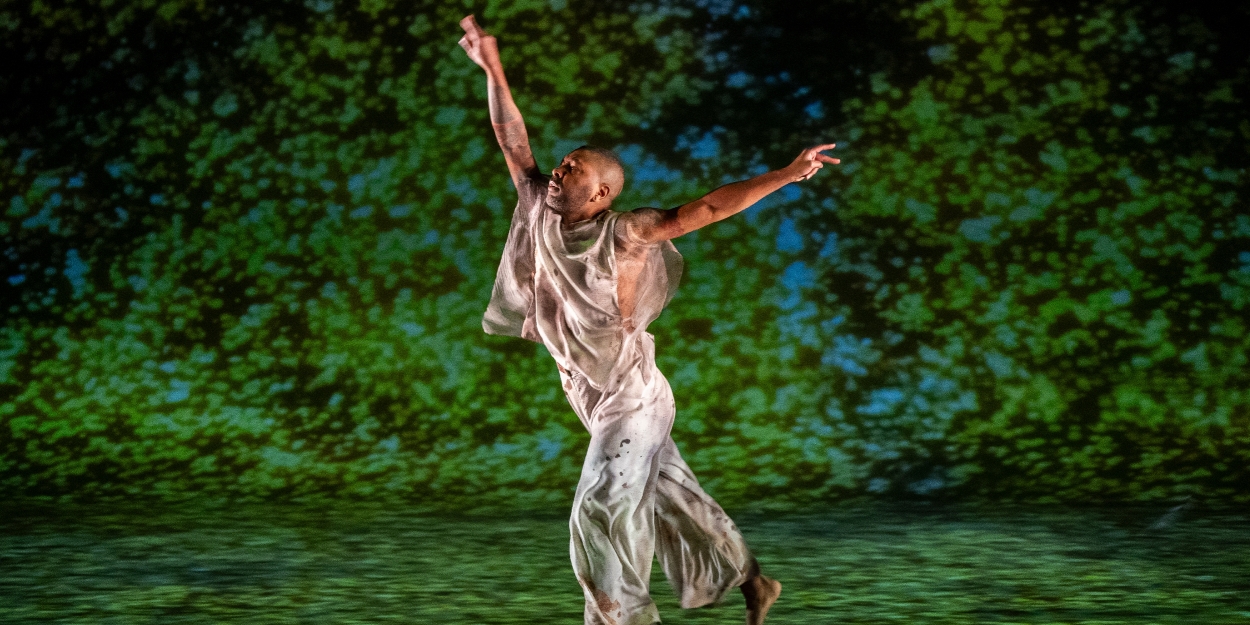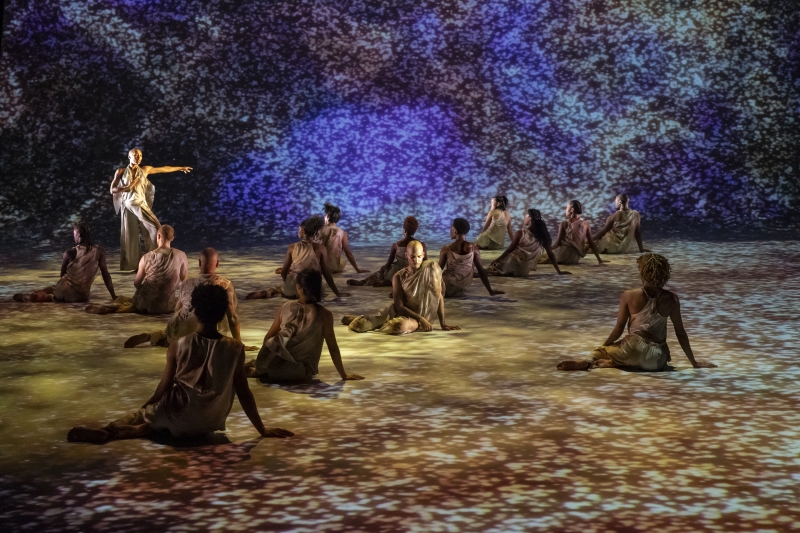Review: Kyle Abraham Explores His Ouroboros
The artist’s most recent work, Dear Lord, Make Me Beautiful, is a meditation on the never-ending cycle of uncertainty, expectation and isolation that consumes us all.

The one constant in life is change. Humankind is destined, and doomed, to cycle through periods of denial, discomfort, exploration, adaptation, and integration to return to a similar starting point after a period of transformation. Kyle Abraham’s latest work, Dear Lord, Make Me Beautiful, explores not just this infinite loop, but how we thrive within the confines of life’s ouroboros.
Premiering at the Park Avenue Armory on December 3-14th, Dear Lord, Make Me Beautiful marks the first time in nine years that Abraham has made an ensemble work in which he has also performed. The evening-length work one of his most personal yet, shaped not just by his fear of mortality, uncertainty and isolation, but also how those fears may be collective.
 For 15 years, Abraham has consistently made the personal public, often exploring his perceptions of race, gender and sexuality in works created for his company, A.I.M. Dear Lord, Make Me Beautiful explores similar themes of personhood, but with even greater uncertainty and vulnerability. On the Armory’s massive, 55,000 square-foot stage, Abraham runs feverishly in circles. His dancers join this cycle, pausing to sob or embrace or sleep curled up like children. Dancers disappear and re-appear in total darkness. Sometimes dancers stand, alone and small on stage, and other times they are chased by a mob-like ensemble.
For 15 years, Abraham has consistently made the personal public, often exploring his perceptions of race, gender and sexuality in works created for his company, A.I.M. Dear Lord, Make Me Beautiful explores similar themes of personhood, but with even greater uncertainty and vulnerability. On the Armory’s massive, 55,000 square-foot stage, Abraham runs feverishly in circles. His dancers join this cycle, pausing to sob or embrace or sleep curled up like children. Dancers disappear and re-appear in total darkness. Sometimes dancers stand, alone and small on stage, and other times they are chased by a mob-like ensemble.
Abraham shies away from the cliched urge to make the uncertain frantic, and instead his dancers move, silk-like, across the stage. He is spare, uninterested in gimmicks or tricks. He creates moments: a pas-de-deux that uses mimicry to evoke intimacy, or a solo that asks how quickly individuality can turn to insolation. Each of these explorations are subtle and, rather than demand attention, the work requires focus to resonate.
It is difficult to offer the dance that focus when yMusic’s score tells its own story. Cinematic and sweeping, the score is an odyssey; a romp through hope and despair and control and chaos. It’s hard not to sit on the edge of one’s seat, leaning toward where the musicians sit, elevated above the stage, and wonder what happens next. What flute or violin solo might foretell the end of mankind, or how a guttural cello note or unsettling reed solo inspire hope? The score oscillates between such extremes, never settling, to power the infinite loop on stage.
 Infinite loops of any kind are best seen in nature. Cao Yuxi’s scenic design focuses on the best-known loop Earth has: seasons. Rorschach-like images of a forest or garden, distorted as if viewed through a kaleidoscope, are projected from the audience to the sky-high rafters. Throughout the work, the colors shift -- rusty for fall, ashen for winter, bright for spring, heated for summer -- before a sudden stark whiteness appears. The work is done. Abraham, alone on stage, begins to circle again. As he runs, white fades to black and another cycle begins.
Infinite loops of any kind are best seen in nature. Cao Yuxi’s scenic design focuses on the best-known loop Earth has: seasons. Rorschach-like images of a forest or garden, distorted as if viewed through a kaleidoscope, are projected from the audience to the sky-high rafters. Throughout the work, the colors shift -- rusty for fall, ashen for winter, bright for spring, heated for summer -- before a sudden stark whiteness appears. The work is done. Abraham, alone on stage, begins to circle again. As he runs, white fades to black and another cycle begins.
Reader Reviews
Videos

